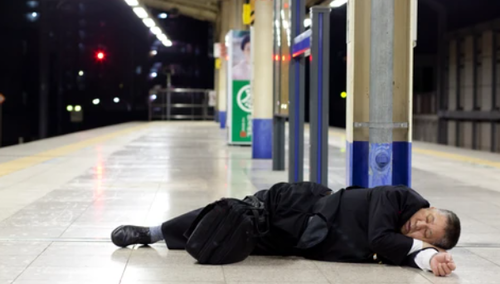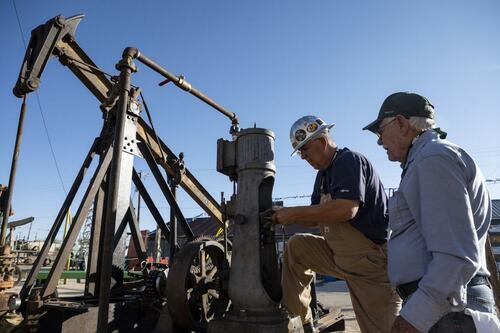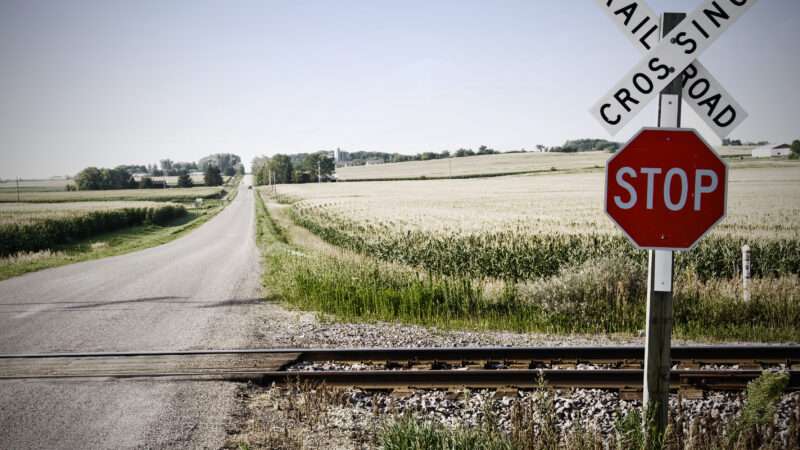Authored by Rowdy Yates via BitcoinMagazine.com,
Traditionally, hard money has the two main qualities of autonomy and correlated-redeemability, but bitcoin has the former without the latter…

WHAT’S IT BACKED BY?
One of the most common criticisms from nocoiners remains, “But bitcoin isn’t backed by anything.”
This criticism targets bitcoin’s dearth of a quality that I term “correlated-redeemability.”
The most common rejoinder to this criticism is, “Your U.S. dollar isn’t backed by anything either.”
The problem with this factually correct response is that it misses a deeper point.
The deeper point is that while bitcoin lacks one traditional quality of hard money (correlated-redeemability), it possesses the primary but less visible quality of hard money: autonomy.
This article is meant to explore the scope of autonomy, how it came to be overshadowed by correlated-redeemability and the relative value of these historically tandem qualities of hard currencies.
A TALE OF TWO QUALITIES
Traditional hard money has had two qualities: correlated-redeemability and autonomy. The first is easier to understand. Conceptually, correlated-redeemability is the quality of a currency that facilitates a rapid redemption for a stable amount of a commodity (traditionally a tangible one). Precious metal coinage illustrates how easily this quality can be understood. If someone pays for your labor with a gold coin, you exchange your unit of labor for a scarce metal that you can hold in your hand. Paper notes backed by precious metals are marginally more abstract, but because of historic exchange practices, they had concrete manifestations. Consider the U.S. government’s silver certificates, issued until the 1960s, which allowed mere plebs to exchange paper notes for genuine silver. The physical nature of correlated-redeemability helps make it cognitively accessible for the broader public.
By contrast, a currency’s autonomy is considerably more abstract. Conceptually, currency autonomy is a quality that exists on a spectrum and reduces a sovereign’s capacity to manipulate the currency in a material way — think: inflation and debasement. Practically speaking, we can think of autonomy as the aggregation of barriers — tiny or big, physical or psychological — that put a check on schemes to manipulate the currency.
THE SPECTRUM OF AUTONOMY
As with any abstract idea, a parable can be a useful means of visualizing. Let’s imagine three sovereigns: Nayib, sovereign of a country that uses only bitcoin; Ike, sovereign of a country that uses only gold coinage; and Dick, sovereign of a country using a pure fiat currency.
Nayib might want to increase his spending beyond tax revenue. However, he cannot increase the supply of bitcoin beyond what is written in the code. Additionally, Nayib does not automatically benefit from any expansion of the money supply unless he engages in successful, capital-intensive, proof-of-work mining. The net result: if Nayib tries to buy a G3 jet with deficit spending, the Gulfstream Corporation will have to accept an IOU instead of bitcoin. Nayib’s currency has high autonomy and only attenuated, uncorrelated-redeemability.
Ike wants to be a profligate spender, but is constrained. If Ike’s expenses exceed his tax revenue, he has options, but none of them can be pursued in a cavalier manner. First, Ike can clip coins; as his administration comes into contact with coins, they can physically trim the edges and use the scraps to cast more coins. The upside is that this option isn’t terribly labor intensive. The downside is that even the blind of Ike’s country can detect the scheme. Second option: Ike can debase the metal of the coins. To do this, Ike needs to aggregate gold coins, schlep them to a furnace, mix gold with cheaper metals and mint newly-debased coins. This option is considerably more labor intensive, and by involving more coconspirators, the plot is increasingly subject to detection. With either option, Ike also has a psychological barrier, namely, he knows he is breaking the law regulating his own coinage. A third option is mining more gold ore to mint new coins. This third option has no psychological barrier, but it is the most labor-intensive of the three options. Ike’s currency has intermediate autonomy and immediate, correlated-redeemability — the qualities of traditional hard money.
Dick is also a profligate spender, but as we all know he is not constrained. Dick’s country uses a fiat currency, so of course Dick just needs to have his treasurer hit the money-printing button, and the deficit is solved (at least in the short term). Additionally, because this is the nature of fiat currencies, Dick’s actions are perfectly legal, so he doesn’t even face psychological stigma for his actions. At the end of the day, there is no significant short-term cost to what Dick has done, and because of that low cost, the temptation for Dick to hit “CTRL P” remains quite high in perpetuity. Dick’s currency has de minimis autonomy and attenuated, uncorrelated-redeemability.
This is the spectrum of currency autonomy: bitcoin > gold coinage > fiat.
WHY IS REDEEMABILITY AN ELUSIVE CONCEPT?
Prior to European voyages to Australia, a European would be forgiven if they believed that all mammals (animal species with lactating mothers) gave birth to live young. At the time, every mammal known to Europeans gave birth to live young. After Australian fauna became broadly known, the platypus threw a wrench into the paradigms of European biologists because the platypus is a species with lactating mothers, but the mothers laid eggs in lieu of live births. Once a real-world counterexample became available, it was relatively easy for biologists to disentangle traditionally tandem qualities of lactation and live births and then clearly identify the proper distinguishing characteristic of mammals to wit: lactating mothers.
Prior to bitcoin, you would also be forgiven if you believed that all hard money must have correlated-redeemability. At the time, every traditional hard currency had the quality, e.g., gold coins, Yap stones, sea shells. After bitcoin, a wrench was thrown into the paradigm of hard money because bitcoin had autonomy without correlated-redeemability. With this real-world counterexample, we can now disentangle the traditionally tandem qualities of autonomy and correlated-redeemability and clearly identify the proper distinguishing characteristic of hard money to wit: autonomy.
This history sheds light on why discussions of hard money have neglected autonomy and focused on correlated-redeemability. Historically, currency holders associated hard money with its most patent characteristics: the tactile and visible features of the correlated commodity. Autonomy by contrast, remained in the shadows, quietly checking schemes to manipulate the currency. To the extent autonomy was considered at all, it was probably only considered by sovereigns as an annoyance to their debasement plans.
THE ENDOGENOUS VALUE OF AUTONOMY
There is an inherent problem with valuing correlated-redeemability because this value is downstream of the integrity of the underlying monetary system. For example, if Ike debases his country’s coinage, a shop owner who is owed a single gold coin has his correlated-redeemability reduced in direct proportion to Ike’s debasement. If the shop owner receives a coin with 50% less gold, the shop owner’s correlated-redeemability for that precious commodity has been reduced by 50%. Therefore, correlated-redeemability has no endogenous value; the holders of commodities can always debase the commodities they custody.
By contrast, autonomy’s value is endogenous. All things being equal, the more difficulty a schemer has in debasing the currency, the less the system will debase, therefore, autonomy tends to bolster monetary integrity and this is the value of autonomy, i.e., autonomy is upstream of monetary integrity. In the case of bitcoin, the autonomy of the currency prevents debasement from schemers and ensures integrity over time. In the case of gold coinage, the currency’s autonomy can strengthen monetary integrity and bolster correlated-redeemability, but the reverse is not true.
BE PRECISE IN YOUR SPEECH
Marduk, the ancient god of Babylon, derived his mythic powers from the ability to see clearly and speak magic words. The importance of identifying, naming and analyzing the qualities of hard money cannot be understated. This process is critical not only because it clarifies our understanding of hard money (seeing clearly), but also because it sharpens our verbal toolkit in the process (speaking clearly). Without a rhetorical means to decouple correlated-redeemability from hard money, “What’s it backed by?” remains an elusive critique to rebut, hollow though it may be.
Bitcoiners intuitively understand the value proposition of autonomy, but this understanding is generally implicit. An explicit understanding of currency autonomy accelerates Bitcoiners’ capacity to educate and persuade nocoiners on the merits of bitcoin — the hardest extant money. Experience makes this point self-evident; reflect back on how many times you’ve had remarkable thoughts, but you lacked the words to articulate those thoughts until a meme, film or wordsmith came along and smashed the rhetorical barrier for you. A prime example of this rhetorical power is the “pill” parlance from “The Matrix” creators. Terms like “red pill,” “blue pill” and of course, “orange pill” allow you to describe a very cumbersome and abstract notion in a clear and precise way. Even if someone has never seen “The Matrix,” you can walk the newbie through the plot lines and still make your point. The cumbersome notions underpinning hard money pose similar difficulties. Through the use of anecdotes, a sharpened verbal toolkit and a clear understanding of hard money, Bitcoiners can shift the focus from correlated-redeemability to currency autonomy and push the dialogue forward.








